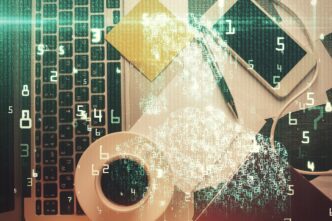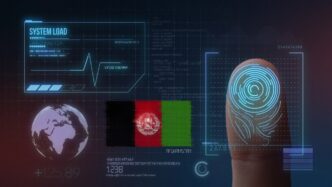Executive Summary
- Workations blend remote work with leisure in a new locale, aiming for refreshed productivity and new experiences, but inherently maintain digital engagement.
- A workation cannot serve as a replacement for a digital detox because work obligations persist, keeping individuals digitally tethered and preventing the profound mental recalibration offered by complete disconnection.
- Digital detoxes involve deliberate abstinence from digital devices to alleviate mental strain, restore clarity, and enhance real-world connections, making them a distinct and complementary tool for well-being alongside workations.
The Story So Far
- The rise of the “workation” is driven by the widespread adoption of flexible work policies and a desire among professionals to escape routine while maintaining productivity, contrasting with the “digital detox,” which is a deliberate period of abstaining from digital devices to alleviate mental strain and foster present-moment connection. The core discussion arises from the differing objectives of these two trends, as a workation changes the *location* of work and often relies heavily on digital tools, while a digital detox focuses on reducing or eliminating digital engagement for mental well-being.
Why This Matters
- The rise of workations, while offering a change of scenery and potential for refreshed productivity, fundamentally differs from a digital detox and cannot replace its crucial benefits for mental well-being. This distinction highlights that continuous digital engagement during a workation can hinder genuine disconnection and even contribute to burnout, emphasizing the need for professionals to strategically integrate both intentional digital breaks and location changes to achieve holistic personal and professional health.
Who Thinks What?
- Proponents of workations believe they enhance creativity, combat burnout, and integrate work into a more fulfilling lifestyle by allowing professionals to work remotely from appealing new environments.
- Advocates of digital detoxes emphasize that deliberately abstaining from digital devices is crucial for alleviating mental strain, restoring clarity, improving sleep, and fostering deeper connections with the present moment.
- The article concludes that a workation cannot fully replace a digital detox because their fundamental objectives differ, but they can serve as complementary tools for well-being when mindful digital engagement and boundaries are integrated into workations.
The contemporary professional landscape, shaped by remote work and global connectivity, has given rise to the “workation”—a blend of work and vacation in a new locale—and reignited discussions around the “digital detox,” a period of intentional disconnection from digital devices. Many are now asking: can the allure of a workation, with its promise of refreshed productivity and new experiences, truly serve as a replacement for the profound mental and emotional recalibration offered by a digital detox? While both trends aim to enhance well-being and productivity, their fundamental objectives and methodologies differ significantly, suggesting that one cannot entirely supplant the other, but rather, they can complement distinct personal and professional needs.
The Rise of the Workation: A New Way to Work and Live
A workation involves relocating to a new, often more appealing, environment—be it a beachside town, a mountain retreat, or a vibrant foreign city—to continue working remotely while also enjoying leisure activities typical of a vacation. This trend has surged in popularity, driven by the widespread adoption of flexible work policies and a desire among professionals to escape the monotony of their daily routines without sacrificing career progression.
The appeal lies in the potential for enhanced creativity, a change of scenery to combat burnout, and the opportunity to immerse oneself in a new culture. Proponents argue that a workation fosters a sense of freedom and adventure, allowing individuals to integrate work into a more fulfilling lifestyle rather than viewing it as a separate, often demanding, entity.
However, the core premise of a workation is that work continues, often at a pace similar to or even more intense than at home, due to the need to balance professional responsibilities with the desire to explore. This means individuals remain tethered to their laptops, smartphones, and the internet, keeping them firmly within the digital realm.
Understanding the Digital Detox: Unplugging for Well-being
In stark contrast, a digital detox is a deliberate period during which an individual reduces or completely abstains from using digital devices like smartphones, computers, and social media. The primary goal is to alleviate the mental strain, anxiety, and constant stimulation associated with continuous digital engagement, fostering a deeper connection with the present moment and the physical world.
Traditional digital detoxes often involve strict rules: turning off notifications, deleting social media apps, or even going entirely device-free for days or weeks. The emphasis is on restoring mental clarity, improving sleep quality, reducing stress, and enhancing real-world interactions and experiences without the constant distraction of screens.
The benefits are well-documented, ranging from improved focus and creativity to reduced feelings of overwhelm and enhanced emotional regulation. A true digital detox is about stepping away from the demands of the digital world to reconnect with oneself, one’s surroundings, and one’s loved ones without technological interference.
Fundamental Differences: Goals and Mechanisms
The core distinction between a workation and a digital detox lies in their fundamental objectives. A workation is about changing the location of work, often with the intent to make work more enjoyable or inspiring, but it does not inherently aim to reduce digital interaction. In fact, it often relies heavily on robust digital infrastructure to enable remote work.
Conversely, a digital detox is explicitly about reducing or eliminating digital engagement, irrespective of geographical location. Its purpose is to mitigate the cognitive load and psychological impact of constant connectivity. Therefore, while a workation might offer a change of pace, it typically maintains, or even increases, one’s reliance on digital tools, making it inherently different from the disconnection sought by a digital detox.
The Illusion of Replacement: Why a Workation Falls Short
For many, the idea that a workation can substitute for a digital detox is an illusion. While a new environment can certainly inspire and refresh, the continuous requirement to engage with emails, virtual meetings, and project management tools means the mind remains in “work mode.” The mental bandwidth dedicated to professional tasks often leaves little room for the deep rest and reflection that a true digital detox provides.
Workations can, paradoxically, intensify digital exposure. New tools might be needed to coordinate with remote teams across time zones, and the temptation to document every new experience on social media can lead to even more screen time. This blurring of work and leisure boundaries can prevent individuals from truly “switching off,” leading to a form of “work-burnout-on-vacation” where the mental exhaustion persists despite the picturesque surroundings.
The constant presence of work obligations can also diminish the quality of leisure time. Even when exploring a new city or relaxing on a beach, the knowledge of pending emails or upcoming deadlines can create an underlying current of stress, preventing the full immersion and mental break that a digital detox facilitates.
Integrating Principles: Finding a Middle Ground
While a workation cannot fully replace a digital detox, elements of mindful digital engagement can be integrated into a workation to enhance its restorative potential. Professionals can set strict boundaries for work hours, dedicating specific times to tasks and then intentionally unplugging for the remainder of the day to explore and relax.
This might involve leaving the smartphone at the accommodation during excursions, relying on physical maps, or consciously choosing activities that do not require digital interaction. Establishing “digital-free zones” or “digital-free hours” within a workation can introduce micro-detoxes, allowing for moments of genuine disconnection and presence.
A hybrid approach could see individuals using a workation as a period to strategically reduce non-essential digital use, such as social media scrolling, while still performing necessary work tasks. Following a workation with a dedicated, short digital detox—even just a weekend—could also maximize the benefits of both experiences, allowing for a complete mental reset after a period of intense work-life integration.
The Path Forward: Prioritizing Intentional Well-being
Ultimately, workations and digital detoxes serve distinct, yet valuable, purposes in the modern professional’s quest for balance and well-being. A workation offers a refreshing change of pace and scenery for sustained productivity, while a digital detox provides a crucial opportunity for mental rejuvenation and a re-evaluation of one’s relationship with technology.
Instead of viewing one as a replacement for the other, it is more beneficial to understand them as complementary tools in a holistic approach to personal and professional health. Prioritizing intentional well-being means recognizing when a change of scenery is needed for inspiration versus when a complete disconnection is essential for mental clarity, and strategically incorporating both into one’s life.








